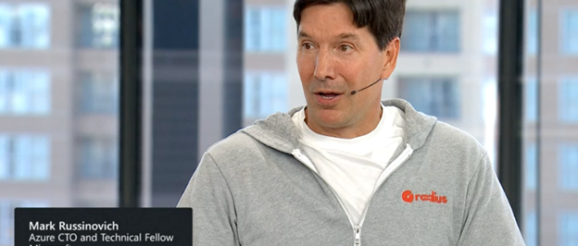Microsoft Azure CTO Details Cloud-Native Innovation at Ignite 2023

At the Microsoft Ignite 2023 conference this week, the company outlined the current status and future direction for a number of its cloud-native efforts. The dominant focus overall for Microsoft Ignite 2023 was AI, with CEO Satya Nadella announcing a series of new features. AI, however, isn’t the only thing that Microsoft Azure CTO Mark Russinovich (pictured) is concerned about. In a session at Ignite, Russinovich detailed his views on how the cloud has changed in recent years to what is now commonly referred to as a cloud-native approach. He also provided insights into a number of current and emerging technologies that Microsoft is working on to further improve cloud-native operations. “I think one of the biggest changes to the architecture has been the rise of containers,” Russinovich said during an Ignite session. “Containers have been around for a while, but really we started to adopt it in Azure in the 2016 timeframe. That’s when it really went mainstream, and that has changed the way that we architect going from monolithic kind of big chunks for microservices to fine-grain containerized chunks.” Cloud-Native Today: KEDA, Dapr, and Copacetic Cloud-Native Today: KEDA, Dapr, and Copacetic
Among the technologies that Microsoft has already developed to help advance cloud-native operations are the open source KEDA, Dapr and Copacetic projects. KEDA is an acronym for Kubernetes-based Event Driven Autoscaler. Kubernetes itself is at the center of cloud-native, providing a platform for container orchestration. The KEDA project was originally created and incubated within the Azure CTO’s office, and it’s a technology that is now considered to be mature, having achieved graduation status from the Cloud Native Computing Foundation (CNCF). The Dapr project, meanwhile, provides reusable building blocks for application integration, Russinovich said. “The idea with Dapr was, let’s create an API surface of building blocks with different purposes,” he said. The Copacetic project that Microsoft created serves a different purpose, providing capabilities for patching container vulnerabilities faster. Russinovich explained that Copacetic enables organizations to do targeted patches for known vulnerabilities that are present in a container image, without the need to rebuild the entire stack for an application deployment. “We actually just put this into production on Azure to patch the images on our own infrastructure,” Russinovich said. “Some of the images have hundreds and hundreds of packages in number, and so they’ll have a thousand vulnerabilities and Copacetic will come in and patch them all without having to rebuild everything.” Radius Is the New Up-and-Coming Cloud-Native Technology Radius Is the New Up-and-Coming Cloud-Native Technology
While KEDA, Dapr, and Copacetic are now widely used technologies, Radius is at a somewhat earlier stage. The new Radius open source project aims to make it easier for developers to describe and deploy containerized applications across different cloud platforms. “Dapr is a programming mode — it’s how you write the code. The idea for Radius is the same thing except it is for how you describe the application,” Russinovich explained. “The idea was to create an application definition that is abstracted from the underlying infrastructure.” Radius allows developers to describe their application independently of the underlying infrastructure, abstracting that connection, he said. Applications can be defined using Bicep or Helm charts and then deployed to Kubernetes, Azure, AWS, or other clouds. Radius understands the connections between application components and can automatically configure services like Pub/Sub when deploying to different platforms. The overall goal of Radius is to separate the application definition from infrastructure details and allow platform teams to connect applications to compliant environments. About the author Sean Michael Kerner is an IT consultant, technology enthusiast and tinkerer. He consults to industry and media organizations on technology issues.
